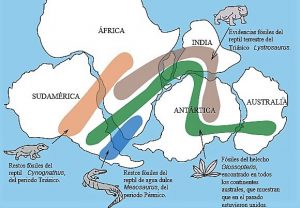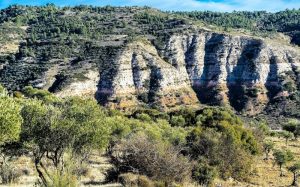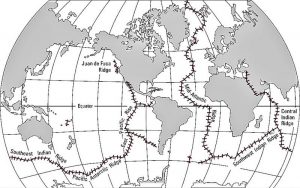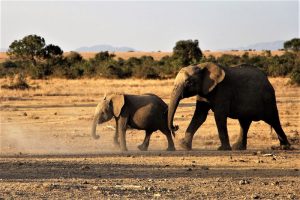Continental drift
The continental drift hypothesis was developed in the early 20th century, by Alfred Wegener, who said that continents moved on the Earth's surface until they came together as a single super continent. Continental drift is a theory that explains how continents manage to change position on the Earth's surface. It also explains why certain animal and plant fossils and similar rock formations appear on different continents. It also describes one of the first ways in which geologists thought continents moved over time from one place to another. Today, the continental drift theory has been replaced by the tectonic plate theory.
What is continental drift?
It was a scientific theory developed in the years 1908-1912 by Alfred Wegener, a German meteorologist, climatologist and geophysicist, who hypothesized that the continents had originally been part of a super continent approximately 240 million years ago before separating and finding their current locations.
Continental drift theory
At the time, Alfred Wegener was well known for his work in the field of polar meteorology and research, but today he is best remembered for his contributions to the development of the continental drift theory. His first ideas came when he noticed that the Earth’s continents fitted closely, but not along its coasts due to erosion and wear. Then he realized that, on the continental shelves, all the great masses of the Earth fit almost perfectly. He made several expeditions to both sides of the Atlantic Ocean to analyze the type of rock and the distribution of fossils and found an important overlap between the East and West sides of the Atlantic Ocean. He then succeeded in demonstrating that 2 billion-year-old rocks were continuous from one continent to another.
Wegener deduced that the continents must have been connected in a single super continent called Pangea, about 300 million years ago, and that from this mass, continents were separated, fragmenting into two blocks capable of moving: Laurasia, which would later give rise to North America, Europe and Asia; and Gondwana, which would give rise to Africa, South America, Australia, Antarctica and India, until the continents manage to acquire and positions in the places where they are today. He presented his ideas to the German Geological Association in 1912, and wrote a book entitled “The Origin of Continents and Oceans” in 1915. During his studies, he managed to gather geographical, geological and paleo-climatic, paleontological proofs that supported his theory, although later it was discarded by scientists.
Evidence
In his studies, he used several tests or evidences that we detail below:
- Geographical evidence: He thought that the continents had been united since there were many coincidences on their coasts, mainly in South America and Africa. For him, it was logical that because they had been united before, they shared characteristics.
- Paleontological tests: Fossils were one of the most important tests to prove that the continents had been united. Studies indicate that prehistoric animals were able to cross the oceans that today separate the continents. This indicates that the continents were united.
- Geological and tectonic tests: Continents have the same types of rocks, minerals, mountain ranges in common that indicate that, in ancient times, there was a continuous and common mountain belt, which probably was separated millions of years ago.
- Paleo climatic tests: This was one of the most important tests. It was discovered that there were different zones on earth in which the climates of today did not coincide with those they had in the past, since in several regions where there was heat, today there is snow and vice versa.
Continental drift stages
The stages of continental drift were:
- Pangea: Which existed approximately 225 million years ago in the Permian period.
- Triassic: Formed by Laurasia, Gondwana and Antarctica, which were present during the Triassic period about 200 million years ago.
- America, Africa, Asia, India, Australia and Antarctica: which remain to this day.
- Jurassic: That existed 145 million years ago
- Cretaceous: That had its role 65 million years ago.
Importance of continental drift
The theory of continental drift is and has been important because it has helped scientists explain the different formations of mountains and mountain ranges. It also managed to change the perspective of how the world began, because at first, it was thought to have originated from a large fused mass.
How to cite this article?
Briceño V., Gabriela. (2019). Continental drift. Recovered on 24 February, 2024, de Euston96: https://www.euston96.com/en/continental-drift/










